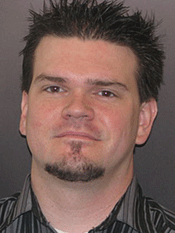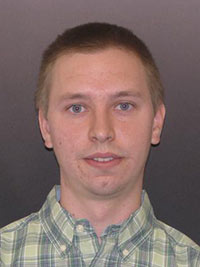- Cisco Community
- Technology and Support
- Networking
- Switching
- Ask the Expert: Understanding, Configuring, and Troubleshooting
- Subscribe to RSS Feed
- Mark Topic as New
- Mark Topic as Read
- Float this Topic for Current User
- Bookmark
- Subscribe
- Mute
- Printer Friendly Page
Ask the Expert: Understanding, Configuring, and Troubleshooting a Converged Network Using the Cisco Catalyst 3850 Series Switch
- Mark as New
- Bookmark
- Subscribe
- Mute
- Subscribe to RSS Feed
- Permalink
- Report Inappropriate Content
11-21-2013 02:46 PM - edited 03-07-2019 04:43 PM
With Luke Primm, Colby Beam and Nicholas Tate



Welcome to this Cisco Support Community Ask the Expert conversation. This is an opportunity to learn and ask questions about converged networks using the Cisco Catalyst 3850 Series Switch with experts Luke Primm, Colby Beam and Nicholas Tate. Our experts will answer all your questions about understanding, configuring, and troubleshooting a converged network using the Cisco Catalyst 3850.
The Cisco Catalyst 3850 is part of a unified access solution based on Cisco’s one policy, one management, one network. One network is the convergence of wired and wireless networks into one physical infrastructure with greater intelligence, performance, features, and operational consistency for simplicity and ease of use.
The Cisco Catalyst 3850 is a converged access switch for both wired and wireless Ethernet. It brings the best of wired and wireless together by supporting wireless tunnel termination and full wireless LAN controller functionality. This technical forum is intended to help answer and aid in the deployment of the Cisco Catalyst 3850 in your network.
Luke Primm is a member of the TAC LAN switching team at Cisco responsible for the support of all Cisco IOS Software switching platforms. He has more than nine years of experience supporting small to enterprise-sized networks. Luke's technical career started as a high school computer technology teacher responsible for teaching the Cisco Networking Academy curriculum. Upon leaving the classroom, he spent the next eight years in education technology helping design and support K-12 network solutions. Luke graduated from Eastern Washington University with a BS degree in computer technology and recently achieved an MS degree in network architecture from Capella University.
Colby Beam has been a technical leader on the LAN switching team for the past year. Additionally, he spent two years working on the Cisco Nexus 5000 and 2000 platforms. He has more than eight years of experience with networking. Colby also has extensive experience with a wide variety of networks and data centers. He holds a bachelor of science degree in computer science from the University of North Carolina at Asheville.
Nicholas Tate is a senior customer support engineer in the global technical assistance center supporting wireless technologies, where he works on complex wireless enterprise issues. He has published numerous wireless documents to Cisco.com and the Cisco Support Community. Tate has been with working at Cisco since 2011 and holds a degree in information computer technologies from East Carolina University.
Remember to use the rating system to let Luke, Colby, and Nicholas know if you have received an adequate response.
They might not be able to answer each question due to the volume expected during this event. Remember that you can continue the conversation on the Network Infrastructure community and sub-community, LAN, Switching and Routing discussion forum shortly after the event.
This event lasts through December 13, 2013.. Visit this forum often to view responses to your questions and the questions of other community members.
- Labels:
-
Catalyst 3000
- Mark as New
- Bookmark
- Subscribe
- Mute
- Subscribe to RSS Feed
- Permalink
- Report Inappropriate Content
12-09-2013 03:01 PM
Ok....Make sense...thank you.
- Mark as New
- Bookmark
- Subscribe
- Mute
- Subscribe to RSS Feed
- Permalink
- Report Inappropriate Content
12-10-2013 09:01 AM
Can you confirm that it is possible to stack IP Services and IP Base switches in the same stack.
thanks
- Mark as New
- Bookmark
- Subscribe
- Mute
- Subscribe to RSS Feed
- Permalink
- Report Inappropriate Content
12-10-2013 09:40 AM
All of the switches in the stack have to have the same license level
Q.
What are the license requirements for a Cisco Catalyst 3850 switch stack?
A. In a Cisco Catalyst 3850 stack, all switches should be at the same image-based license (IP Services/IPBase/LAN Base) level. The active switch license level is considered as the reference, and the member switch licenses are compared against it. If there is a mismatch, the active switch with the syslog message "license mismatch error" indicates that the stacking was unsuccessful.
http://www.cisco.com/en/US/prod/collateral/switches/ps5718/ps12686/qa_c67-722110.html
- Mark as New
- Bookmark
- Subscribe
- Mute
- Subscribe to RSS Feed
- Permalink
- Report Inappropriate Content
12-10-2013 06:50 AM
Hello...the management interface on the 3850....is it just a layer -2 interface....or should i be able to route across segments to get to it?
- Mark as New
- Bookmark
- Subscribe
- Mute
- Subscribe to RSS Feed
- Permalink
- Report Inappropriate Content
12-10-2013 09:46 AM
Kevin
The mgmt interface is in its own VRF and would be treated as a "host" interface. You cannot put it in a different VRF. The only configuration is an IP address
interface GigabitEthernet0/0
vrf forwarding Mgmt-vrf
ip address X.X.X.X X.X.X.X
no ip route-cache
negotiation auto
end
You would also need to create a default route for this VRF. Example:
ip route vrf Mgmt-vrf 0.0.0.0 0.0.0.0 Y.Y.Y.Y
If you wish to use this interface for copying TO the switch, you would need to configure the following. This will tell the switch to use this interface
ip ftp source-interface GigabitEthernet0/0
ip tftp source-interface GigabitEthernet0/0
The upstream device that this Gi0/0 is plugged into just needs to be configured as a switchport access vlan. Typically customers put this in their mgmt vlan that they have configured in their network to access their devices via ssh/telnet.
Let me know if you have further questions.
- Mark as New
- Bookmark
- Subscribe
- Mute
- Subscribe to RSS Feed
- Permalink
- Report Inappropriate Content
12-11-2013 12:35 PM
Hello
Hello we are also upgrading our campus 3750 switches with 3850….I want to know is there any big changes in trunking, etherchanneling, or portchanneling with this new IOS XE 3.3? any new particular steps. Also can you point me to 3850 documentation for NetFlow, and NetFlow_v9.
Thanks-KDS
- Mark as New
- Bookmark
- Subscribe
- Mute
- Subscribe to RSS Feed
- Permalink
- Report Inappropriate Content
12-11-2013 12:54 PM
Kevin
The biggest difference between thse three things (trunking, etherchanneling, port-channeling) is we only support Dot1Q now on the 3850 vs the 3750. ISL is gone. This is across all version for 3850, not specific to 3.3.0. I would also check out Luke's post above about QoS on the 3850 vs 3750 as we moved from MLS QoS to MQC QoS. This is a major change.
I would check out the "what's new" for 3.3.0 to get the newest feature as we did add some significant features improvements
Below is the config guide for NetFlow. I started you off at the restrictions as we support flexible netflow on the 3850.
- Mark as New
- Bookmark
- Subscribe
- Mute
- Subscribe to RSS Feed
- Permalink
- Report Inappropriate Content
12-11-2013 02:48 PM
Hi again guys,
Another question on this subject. My SSIDs and Aps are configured, but why am I unable to see the SSID broadcasting? thanks.
Evan
- Mark as New
- Bookmark
- Subscribe
- Mute
- Subscribe to RSS Feed
- Permalink
- Report Inappropriate Content
12-12-2013 02:16 PM
Hello Evan,
Thank you for the second question. I like your interest in this new product and will be glad to help.
This can happen for a couple of reasons. Start with the basic, are your APs connected and are the wireless networks on and the radios on the APs up?
Generally, when I see this issue popping up I see that the SSIDs are outside of the defaullt AP group called "default-group". If your WLAN ID number is higher then WLAN ID 16, your SSIDs are not placed in the Default-Group and your SSIDs are not broadcasted. There are 2 ways to correct this. Rewrite your WLAN config to a WLAN ID between 1-16 or create an AP group and assign an AP to the new AP group.
Lets us know if you have any other questions.
Nick
- « Previous
- Next »
Discover and save your favorite ideas. Come back to expert answers, step-by-step guides, recent topics, and more.
New here? Get started with these tips. How to use Community New member guide